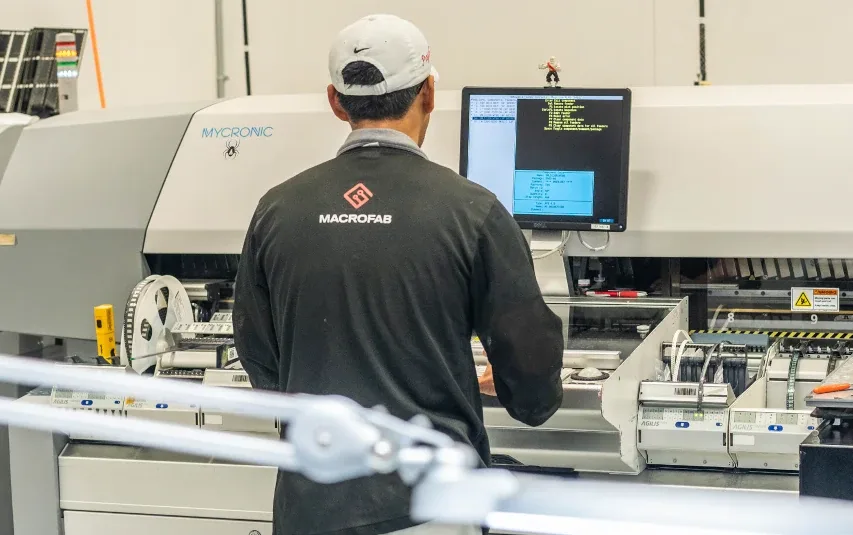MacroFab Blog
Although the supply chain is arguably a strategic asset of any organization, the function continues to be measured as a cost center as well. Often, this comes with a mandate to continue to do more work with fewer resources. This is a difficult but not impossible task. A combination of smartly leveraged technology combined with old-school relationship management with suppliers and vendors is essential for success with smaller supply chain teams.
“Supply chain is an expense line, not a profit line, so the goal is always to do more with less,” said Keith Hunziker, Director of Supply Chain for MacroFab. “Automation and innovation in automation are offering new ways to do old tasks—and that’s one way to get more done with fewer people. Tight supplier relationships help too.”
Tech Rescue

Automation may be the first line of defense for the overworked supply chain. “We certainly see the desire to do more with less,” said Dave Brunswick, Senior Vice President of Product at Cleo, which makes supply chain management solutions. “The common thread is that nothing is as stable as it used to be—things change more quickly as supply and demand swing. Teams are certainly smaller so there is a desire to look for automation to optimize how those things work. There’s also a convergence between different bits of the supply chain.”
Using technology to automate ordinary tasks frees up supply chain professionals to focus on more strategic activities. “I dream of a day when you can just press a button,” said Hunziker. “Still there are things that can be taken care of with a button—and we prioritize technologies and partners who offer a readily available application programming interface (API).”
The technology is available, especially when it comes to seamlessly executing supply chain processes. More and more, supply chains rely on tech to get supply chain tasks done efficiently and with less human intervention. By 2026, more than 75% of commercial supply chain management application vendors will deliver embedded advanced analytics (AA), artificial intelligence (AI), and data science, according to research firm Gartner. Further, three out of four large enterprises will have adopted some form of intralogistics smart robots in their warehouse operations.
Ideally, technology will seamlessly connect different areas of the supply chain and various processes in a seamless way. “By automating supply chain processes, organizations need less manual intervention,” said Brunswick. Automation offers numerous benefits including:
- Less human time is spent on simple tasks like ordering.
- An improved data stream for better accuracy downstream.
- A complete view of the business process rather than monitoring individual parts.
Checkpoint
More and more, supply chains rely on tech to get supply chain tasks done efficiently and with less human intervention.
However, technology cannot succeed in a vacuum. “There is legitimate excitement today around new technologies that hold out the promise of vastly enhanced organizational productivity,” said Thomas Pocock, Senior Director, Advisory within Gartner’s Supply Chain Practice. “Supply chain leaders must remember that these new technologies require the partnership of an engaged and productive workforce for these gains to be realized.”
Organizations should also put time and attention into back-end systems to ensure a clean stream of data moving through the systems.
Make Friends for Tough Times
Complimentary to technology solutions, nurturing close relationships with suppliers, distributors, and manufacturing partners is
another way to get things done despite a lower headcount. MacroFab, for example, nurtures strong relations with its board makers
to ensure agility during crunch times. “We have some very strong relationships, and our partners will reprioritize our order if we need
something extremely fast,” said Hunziker.

To succeed, organizations must prioritize hiring people who have strong interpersonal skills, Hunziker added. “Everybody on my team knows the same people and talks to them every week or every month. The stronger the supplier relationship is, the stronger your supply chain is going to be.”
Regular communication improves efficiency. If suppliers understand the organization’s mission, vision, and goals, that supports success. Work toward strategic alignment and clear expectations. Then, when problems happen, don’t be afraid to pick up the phone. “You need that combination of electronically integrated partners that process things efficiently and relationships that allow you to pick up the phone and deal with the inevitable bumps in the road,” said Brunswick.
Finally, avoid the pitfall of considering per part price and the organization’s bottom line without considering the health of supplier partners. “Partners need to be invested in you as much as you are invested in them,” said Hunziker. “Parasites kill the host in the end, and that is bad for everyone.”
Conclusion
There will always be pressure to do more with less. At the same time, the supply chain is a critically important function—and organizations need to put the correct technologies and people in place to ensure success. “You have to be accurate, and when a product gets handed off to production, it needs to be flawless,” said Hunziker. “If you are trying to improve your bottom line, the supply chain has to function perfectly.” To reach the right balance, supply chain organizations need to create an equilibrium between hiring skilled people, building strong supplier relationships, and implementing the right technology.
Related Topics
Preparing for Potential Supply Chain Disruptions During Lunar New Year
This blog discusses on how to prepare for unexpected events for global supply chains such as the dockworker strike in preparation for Lunar New Year.
Mapping Out a PCBA Supply Chain Strategy in Five Moves
Companies should create unique vendor relationships with numerous international suppliers due to the necessity of having to source components globally.
MacroFab’s Modern Approach to Strategic Sourcing
Many Contract Manufacturers (CMs) and Original Equipment Manufacturers (OEMs) have some sort of procurement team. So what makes MacroFab so different?
Get Started Today by Requesting Your Quote
About MacroFab
MacroFab offers comprehensive manufacturing solutions, from your smallest prototyping orders to your largest production needs. Our factory network locations are strategically located across North America, ensuring that we have the flexibility to provide capacity when and where you need it most.
Experience the future of EMS manufacturing with our state-of-the-art technology platform and cutting-edge digital supply chain solutions. At MacroFab, we ensure that your electronics are produced faster, more efficiently, and with fewer logistic problems than ever before.
Take advantage of AI-enabled sourcing opportunities and employ expert teams who are connected through a user-friendly technology platform. Discover how streamlined electronics manufacturing can benefit your business by contacting us today.